The Captain of the Plymouth
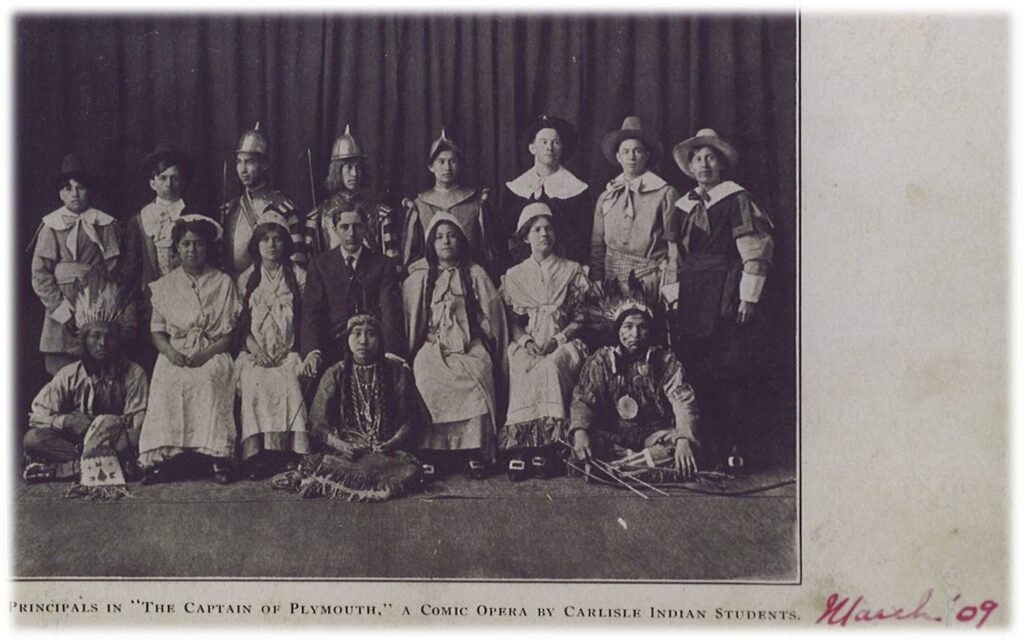
John White, an “educated Indian” and opera singer, had a prominent role in Carlisle’s school play, The Captain of the Plymouth, as one of the original colonists, named Elder Brewster. He sang “with a force, volume, and precision that was a joy to hear.”. according to a school newspaper.⁸ Photos show some students dressed as early colonists and some as the stereotypical Indian, complete with feathers, buckskin, and war paint (White, L., 2016, p. 113).
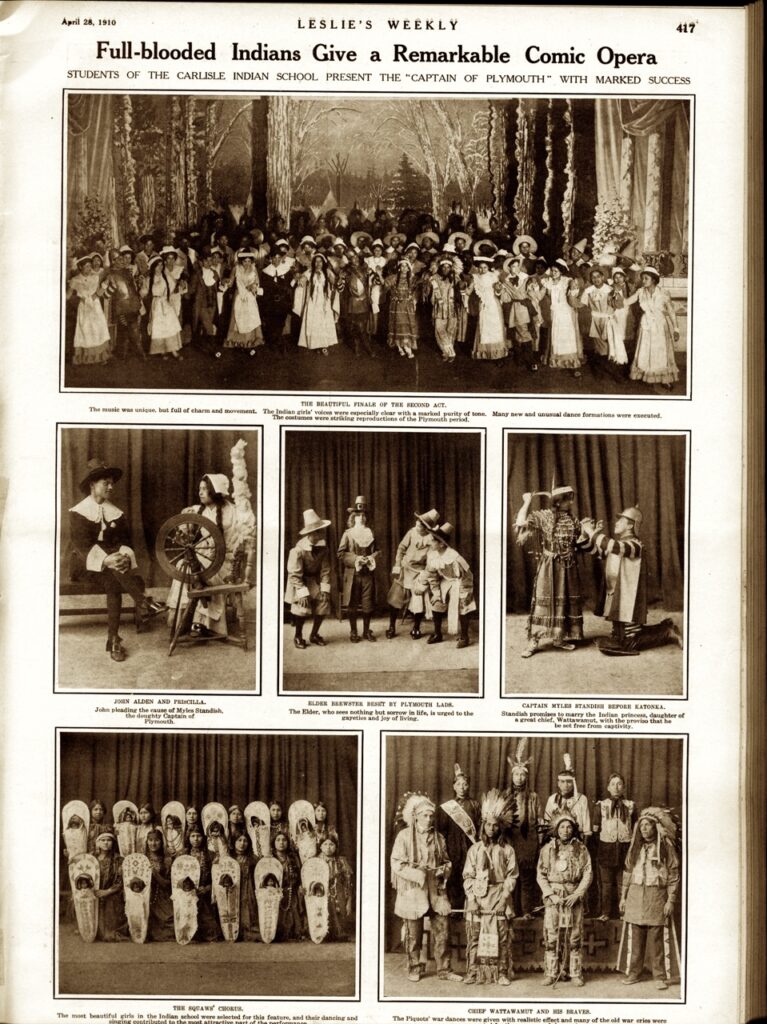
Pratt wanted Carlisle to do more than educate students for subordinate forms of employment; he wanted to change their very consciousness and sense of identity. One method used to erase Indigenous history was to superimpose a dominant white narrative by engaging students in theatrical performances like The Captain of Plymouth, a comic opera by Seymour S. Tibbals and Harry C. Eldridge based on Longfellow’s poem.”
“The Courtship of Miles Standish.” (White, L., 2016. White Power and the Performance of Assimilation: Lincoln Institution and Carlisle Indian School. In Fear-Segal, J. and Rose, S.,(Eds.). Carlisle Indian Industrial School: Histories, Memories, and Reclamations. University of Nebraska Press. p. 111.
First, the play was performed by Carlisle students for other Carlisle students, teachers, and staff, with subsequent showings for townspeople and invited guests, including reporters from Philadelphia..⁶ It was also performed in nearby Harrisburg at the Majestic Theater.⁷ Most likely the show was popular among white audiences because of its acceptance of the narrative of white superiority (White, L., 2016, p. 111).
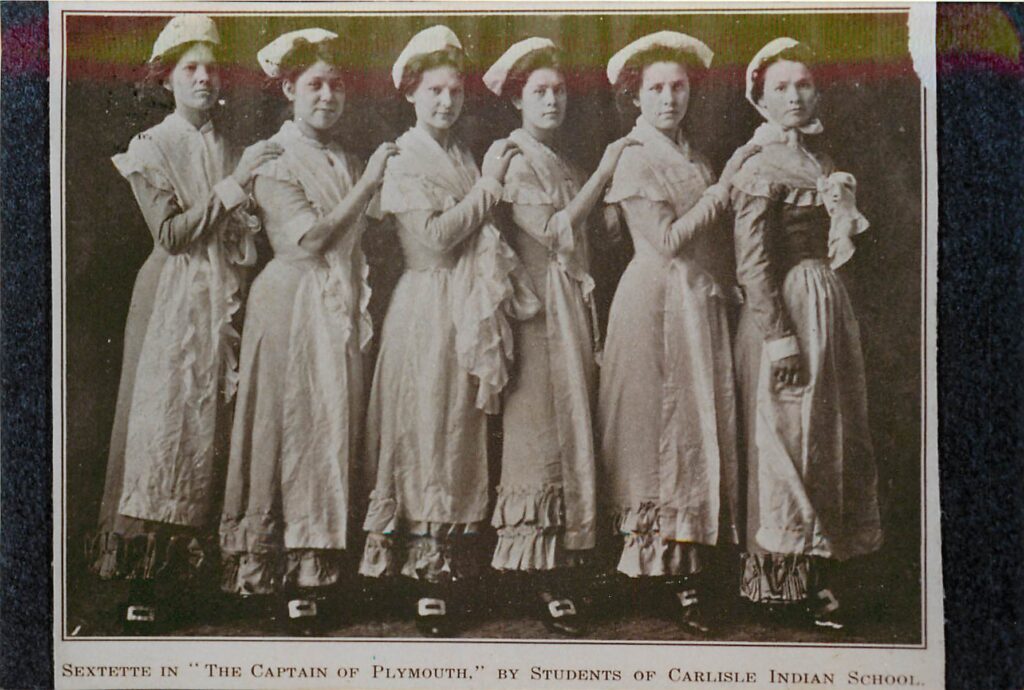
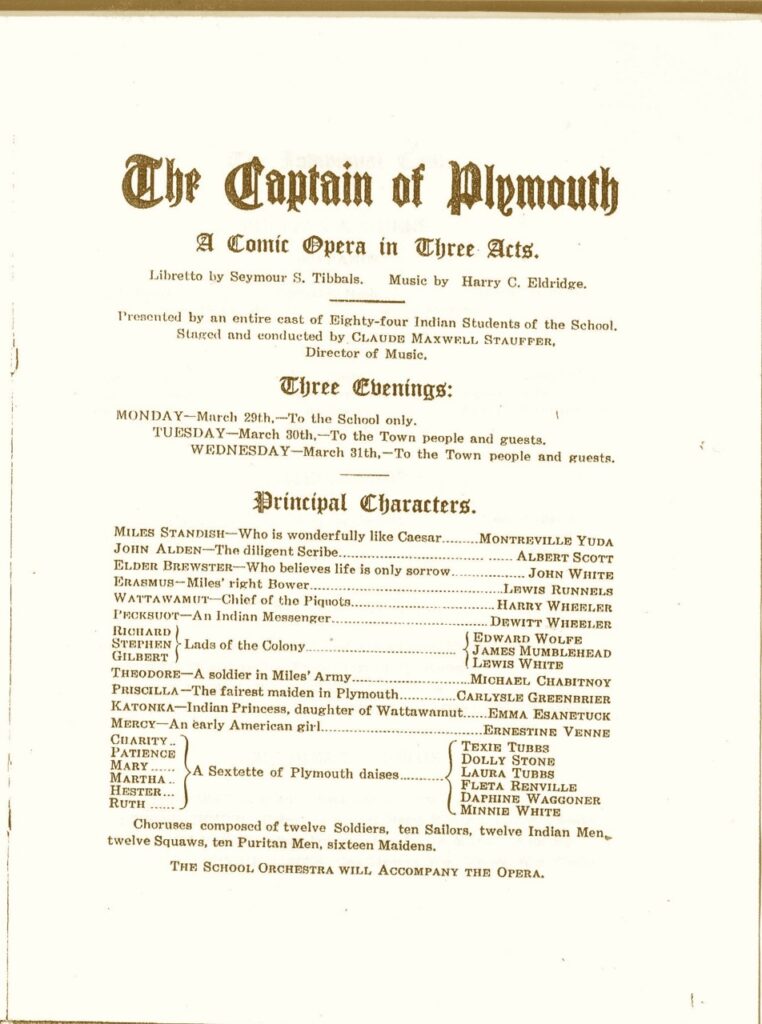
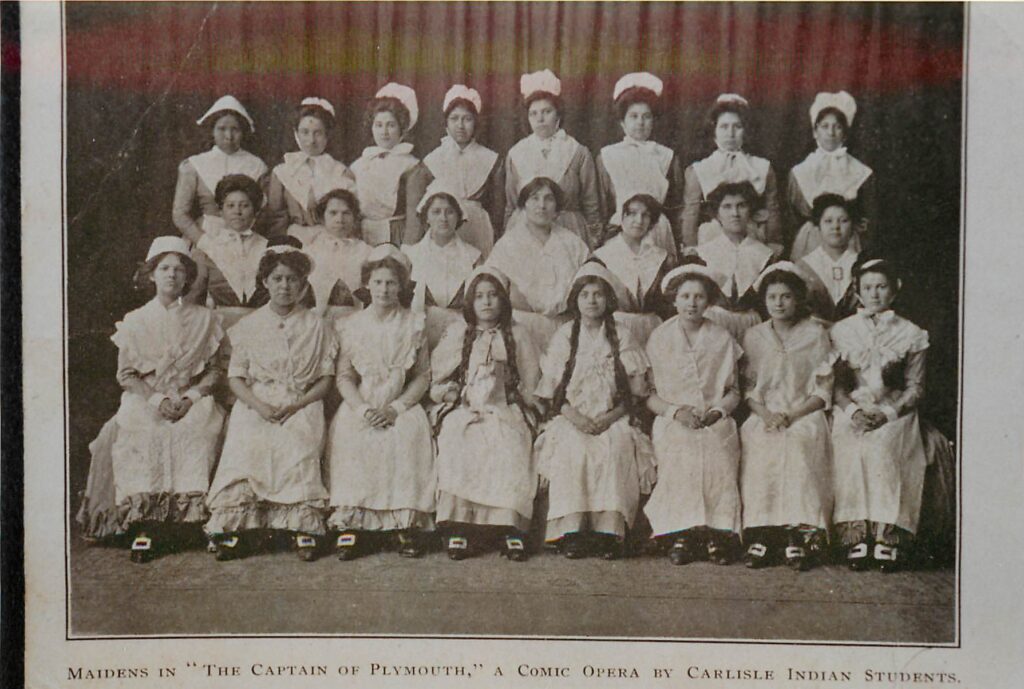
The school promoted assimilation, but the play created a stark dichotomy between white and Indian, civilized and savage, and suggested this gap could never be bridged. Pratt’s initial mission was complete transformation, which required students to leave any semblance of Indigeneity behind in their day- to- day lives. While the school seemed to promise equality if the students assimilated to white values, customs, and behaviors, the play signaled to both the public and the students themselves that “savage Indians” would always be inferior to white Americans. (White, L., 2016, p. 114).
